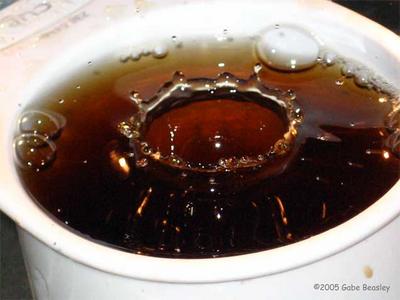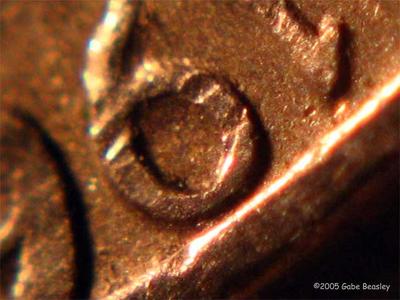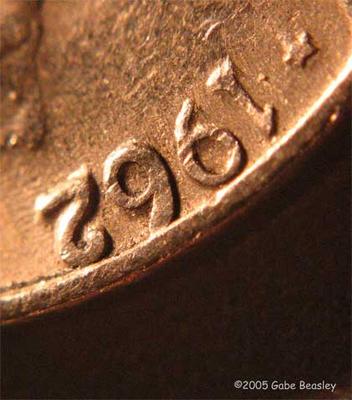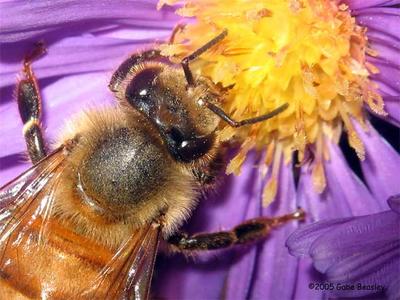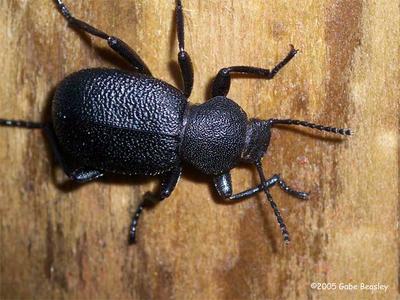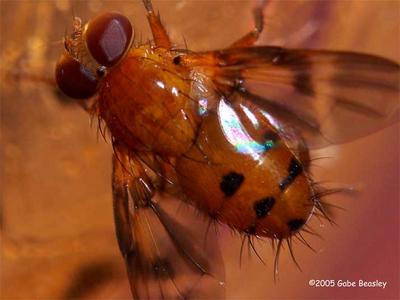I do not know. I re-built the HDD–I’m still working on it. I may have had some
trouble because I ran defrag with only about 3GB of space left. It’s been maxed
out like that for months. I was not aware I should reserve over 10GB just for
system functions. The bizarre symptoms I had have yet to be un-covered.
A number of problems may have caused it to fail in several ways. I chose the most
simple and functional option which was to re-build the system. My computer
makes that very easy, my laptop is able to recover itself whenever I want. I
recommend, Sony, HP, Mac G4.G5 and Thinkpad.
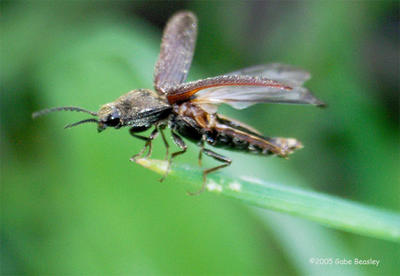
This is one of the very first pictures I took with my first modern digital camera. It was
a very inexpensive compact, but it was incredibly capable of taking remarkable images once
I outfitted it with one of my first adaptors. When I invented these kinds of lens adapters
this camera became capable of true macro-shots as seen in this click-bug which is only
about 1cm long. That was my first modern digital camera. It showed me the digital age is
worth look at seriously (I’m bull headed and it took a lot for me to believe) Digital
quickly became very good for me. By far, the largest gain is the fact that I don’t
have to pay for developing pictures. When I developed my own–I was able to see
my negatives in about 15-20 min. after I took them but I still had cost of chemicals.
The chemicals cost about enough to break even, developing your own does not save
money anymore. The hardest part is most of the chemicals go bad quickly if not
used and there is no way to protect them, so unless your developing TONS of
pictures, you loose money. However processing my own was a lot of fun and
interesting. I may yet do it again someday when the temperature is right. That is
another thing that must be kept stable. Too hot or too cold and the chemicals and
film cannot be processed.. It worked great for me however. I was able to
convert my bathroom into a combo-darkroom with black garbage bags and
tape.
I caught the above image with a simple and small 3.2mp compact camera
with only basic exposure (E+/-) and ISO controls on it. Unfortunately, that
cameras screen cracked in a total accident that taught me the hard way to be
very careful with all digital cameras-- especially the screen. If too much pressure
OR SHOCK is applied to it, or even if it is on a belt-bag and lightly tossed onto a
bed or couch, might get damaged. A cracked screen makes it almost impossible
to use as it becomes completely un-readable. BLUT SHOCK or pressure can also
do the same thing as these LCD displays have glass panels inside them. The
belt-camera-pouch I had this very small camera in was not very well padded.
But I can say that even if it were very well padded–a hard blunt shock or pressure
can crack the screens. I was totally dumbfounded as to exactly how that
camera got cracked, but I guessed it was blunt force when I took it off my belt and
lightly tossed it on my bed or couch, or possibly I left it on my belt and sat down
the wrong way, pressure being a problem. I will never know. I still have it, but
it’s nearly useless as once an LCD-TFT panel is cracked it does not display anything but
strange colors and the back light. All the very small light-cells lose there tiny electrical
contacts entirely. Not one setting, let alone a picture, can be seen. So you can’t really
do much with it now. But this first full-digital camera I got worked and I got my
first experience at taking pictures digitally. It made good prints–I made very nice
8x10 prints with it back when I had to go to a photo-place to have CDs made.
The picture was actually easy to take. I watched the click-bug stretching
it’s wings. Despite some shutter lag in that camera, I was able to catch it on it’s
second or third stretch just as it flew away. This older picture above shows
my progress and knowledge in a way in contrast to the very new photo above.
I am planning to import some of my very first digital Mac pictures which I still
have in backup files from 1996, incredibly.

This is, a very recent picture I took, showing my greater understanding of the
optics I use and the shear luck that made some of it possible. This is the most
advanced picture I have ever taken. This fly is alive, and incredibly was taken
outside in the cool morning air. It just did not want to fly-too cold. I got a couple
of shots of it like this before it did finally fly off. Rather then just guessing like
I used too, I am understanding. This is the most advanced picture I have ever
taken. This contrast shows some of the resolution (I reduced it here for the web–to
get the full version, you gotta e-mail me and buy a CD)--and also capability my
experience in just six months has brought me as I have learned more about the
digital world. And by no means am I any kind of expert–I am still, very much,
a novice. There are many more things I’d like to know and learn then I can
even think of. The ones I can could fill a book. Before I got another digital
camera I did not believe in it much. My prior experience with the one I had
in 1996 made me stereo-type digital cameras and guess they are just glorified
web-cams. I did not think of it much as I spent more and more on film. But I
said digital will never replace film and stuff a lot. I resisted it harshly. Most
of my experience was 35mm and some in medium format (120 film). My very
first digital camera was not very practical as you needed to have the camera
hooked to your computer for it to work at all. Built for laptops–it
had to be used like a webcam. I did have a macro lens for it and was able
to get some pictures. Incredibly I was able to find some archival pictures from that
time. One of myself back when I was a teen with zits! I could not believe it. And
old girlfriends. I was 17 in 1996!
This digi-cam was a hot Mac item in 1995-96. A simple grayscale cam (a color
one came out quickly but I did not buy it)---with all the controls on screen. I forgot
exactly what but there was an exposure, bright, contrast, capture, several modes of
resolution, maybe a couple shooting modes- and so on. The camera was just an
“eye-CCD” that plugged into a Mac serial port. This was way before USB, I don’t
think they had these cams for PC until later. Mac serial ports were faster or easy
for this, I’m not sure which. Unfortunately it was all stolen with the $3000 Mac
laptop I had at the time in 1997 when I was at my girlfriend’s house. And as such
things usually go of course, I never got it back and the case remains un-solved.
Don’t leave your gear laying around at someone’s house when you girlfriend!
There is a moral to that story. When in lust or love and thus obsessed with someone, do
be sure to stow your gear carefully and not take the chance of leaving it in places you
have never been before or can trust! This includes cars, and friends or families homes.
Theft in automobiles has become a larger epidemic as the car alarms are so common
no-one ever looks anymore. My cousin had most of his very expensive gear ripped out
of his fully-alarmed car–a year ago or so. No body pays attention to car alarms much
anymore because they “cry wolf” all the time. When was the last time you looked for
a car alarm when you heard one, to see if just maybe someone is breaking in?
Home security is not as expensive as most people think. I am dumbfounded at
how many people I know who still say “---this is a really nice neighborhood, everybody
leaves there door un-locked around here---we know all our neighbors it’s no big deal,
I’ll just leave the back door open for you so you can get in when you get home----“.
No matter where you are, your at risk of robbery of some kind. The most common
thief looks for a place that’s easy to get into–and easy to hide doing so. The general
idea is to be able to run if someone calls the cops on a suspicious person. So it’s
done during the day, casually–thieves grab news papers or something and walk up
to doors just like they would be selling something and check the locks. Also this
gives them a chance to check windows and other entrance places. Pays to know your
neighbors. So that you can tell them when your gone that nobody is supposed to show
up at your house or apartment. My neighbors are home almost all the time and one
of them is always working in her yard. She’s always aware here. It’s great for me
when I go on trips to see family out-side of town.
Think and lockup like you would at home. Most robberies are actually done
during the daytime, and often they try house to house or unit by unit and only
hit houses and apartments that have doors, windows or windows clearly
open. According to the Discovery Channel, they are usually done in the daytime–
that’s right, daytime. Window robberies are more likely at night. As long as you
have a deadbolt on all doors and locked windows the chances of being robbed go
way down. Yet I continue to find family members who ignore this rule
completely even in not so high-end neighborhoods. Plasma screen TV, laptops
and other stuff easily can be seen from the outside. I guess some people don’t
get it until they get hit. I allowed that door to be open and knew it’s lock could
quickly be picked with a card and I went to this girls house without bringing it–
when I could have and should have. If you however “leave the back door open”
or leave the windows cracked for air or pets—your inviting disaster. I’ve been
robbed several times due to different situations I did not think about. I have
alarms all over my place now which the neighbors know what they sound like.
At one point I almost built a device that would auto-dial 911 when the door or
windows were opened or broken. However, building such a device is illegal and
the fines are stiff so I did not. Keep your eyes on your gear when traveling or
anywhere. I only have been able to re-place the laptop in 1998. It took me two
years to get the money.

